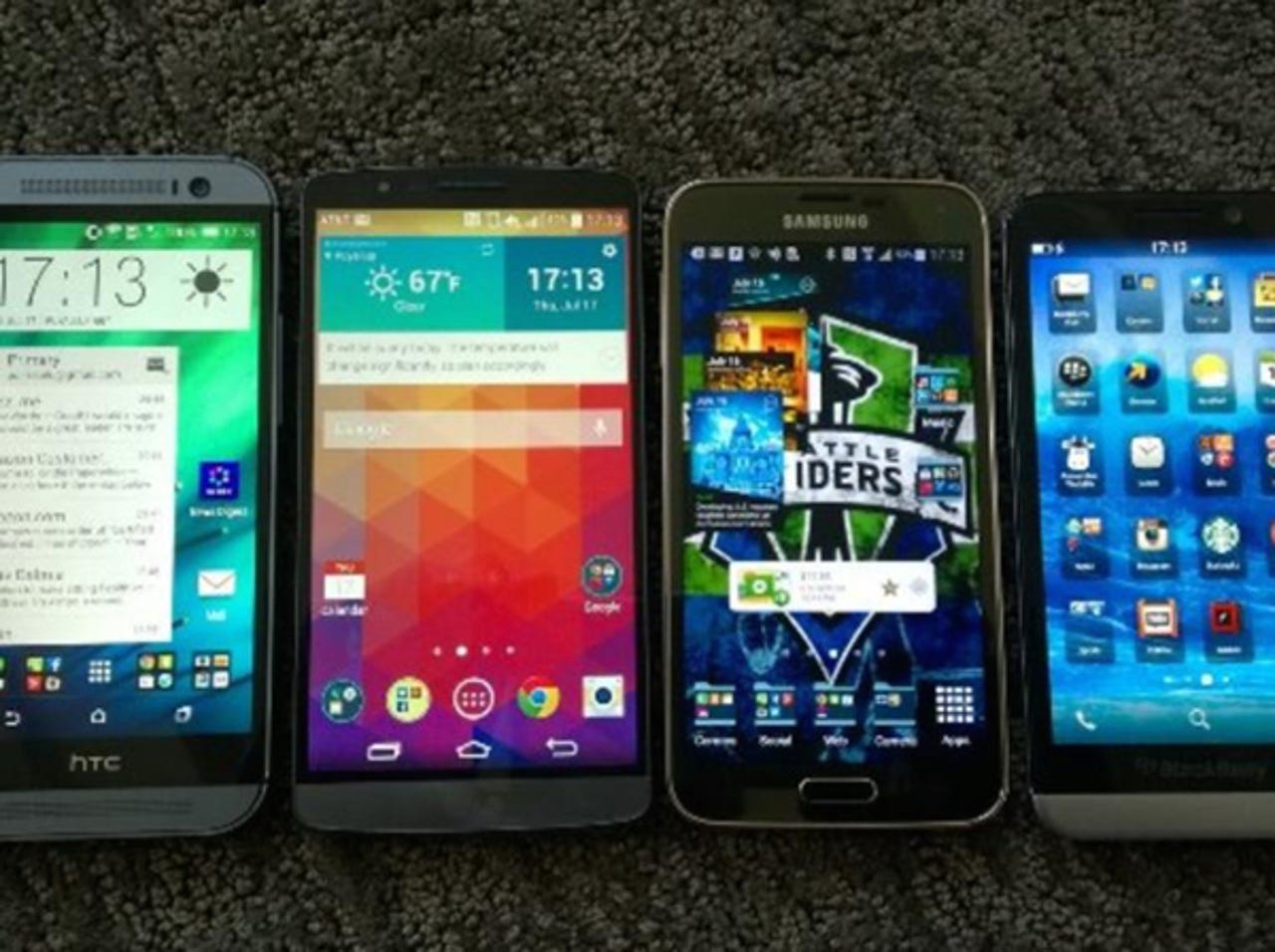Smartphones and tablets: The slab syndrome

Before the iPhone appeared, phones came in different shapes and forms. Some of them bent in the middle (flip phones), others had the screen slide up to expose a keyboard, and others put a little thumb keyboard under the screen.
See also: Six clicks: The mobile gear that changed things in 2014
OEMs went with the form that fit what they wanted to accomplish with a particular phone. From the viewpoint of aesthetics it didn't seem to be a critical choice. Phones looked different from the pack, so the customer's choice often came down to usability.
Then the iPhone appeared, a sleek slab of attractive materials that encased the display. The design resonated with buyers (along with the touch screen), and history was made. The competition soon rushed to compete with the wildly popular iPhone, and in short order most phones were similar slabs.
This was followed by the launch of the iPad. Tablet makers rushed to duplicate the success of Apple's slab. Devices started appearing that were similarly thin and rectangular. 'Slab syndrome' started by the iPhone was firmly entrenched by the iPad.This makes it hard for designers to make their products different in appearance. There's only so much you can do with a slab to give it appeal over the competition. Apple tends to make the backs of the devices shiny that distinguishes it from other phones and tablets. It even tried to add color casing like the competition, but that didn't seem to resonate with prospective buyers.
This leaves it up to software to help products differentiate from the crowd. Apple has an advantage in this regard as it's the only company that uses its software. It adds features that it hopes will make customers want the new gadget. When all is said and done, its devices are pretty much like all the rest.
Makers of devices that use other software try to do this, but underneath it all they are much the same. Android is Android, after all. To a lesser degree the companies using Windows Phone are in the same boat. All devices using that software appear the same to buyers.
More CES 2016
Some companies have tried to address this with unusual hardware design. Lenovo comes to mind with its Yoga tablets. Those have a thick cylinder on one end with an integrated stand. They've even put a unique pico projector in the cylinder of one of the tablets. You have to give them credit for trying, but odds are you've never seen one of these tablets being used in public. Not many seem to be buying them, unique as they are.
It's clear we need to see a company produce a phone or tablet that has a feature, either hardware or software, that sets it apart from the pack. Recent history shows us that's hard enough, but it also must be a feature that attracts buyers. That means it must be aesthetically pleasing in design and also useful.
I suspect both hardware and software designers are sitting around conference tables trying to come up with that solution. Think of it as a slab syndrome fighter.
The Consumer Electronic Show (CES) is underway in Las Vegas, so perhaps some company will surprise us and show off a new phone or tablet with innovative hardware design, running software we can't live without. More likely the CES will be like years past and leave us with the same old slab.
